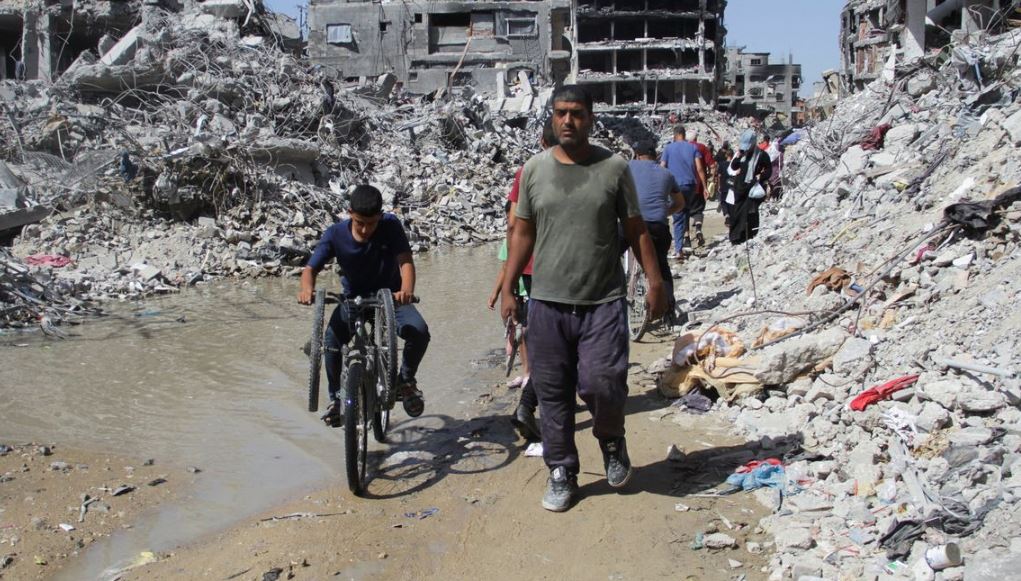Introduction
As the Gaza conflict continues to unfold, the situation in the coastal enclave remains dire. Despite ongoing ceasefire negotiations, the region faces a bleak future fraught with instability and humanitarian crises. The potential outcomes range from chaotic anarchy to partial reoccupation by Israeli forces. This article delves into the complexities of the Gaza conflict, analyzing the implications of a ceasefire, the roles of various stakeholders, and the grim scenarios that may unfold.
The Current State of Affairs
The war in Gaza has entered a new phase, with fighting gradually tapering down. However, Israeli air strikes against Hamas persist. On July 13th, an Israeli strike reportedly killed Muhammad Deif, the mastermind behind the October 7th attacks, along with numerous fighters and civilians. Ceasefire talks are ongoing in Qatar and Cairo, with indications that Hamas is willing to agree to a temporary truce and a swap of hostages and prisoners without demanding a permanent Israeli withdrawal.
Netanyahu’s Position and U.S. Involvement
Israeli Prime Minister Binyamin Netanyahu is striving to maintain his grip on power. He is scheduled to address Congress in Washington on July 24th, where he is expected to emphasize the threats posed by Iran and its proxies. However, Netanyahu’s speech may avoid addressing the critical question of Gaza’s future. The United States should urge Netanyahu to confront the realities on the ground and consider a more sustainable approach to the Gaza conflict.
Prospects of a Ceasefire
A ceasefire, if achieved, would be a welcome respite. It could facilitate the release of Hamas’s surviving hostages in exchange for Palestinian prisoners in Israeli custody. Additionally, a ceasefire would allow for the influx of humanitarian aid and reduce tensions on Israel’s northern border, where clashes with Hizbullah, another Iranian-backed militia, threaten to escalate. However, the ceasefire alone will not resolve the deep-seated issues plaguing Gaza.
Gaza’s Humanitarian Crisis
The humanitarian situation in Gaza is dire. The enclave’s 2.2 million residents live in a devastated, lawless environment with unreliable access to basic necessities such as food and water. The Israeli Defense Forces (IDF) control approximately a quarter of the territory, while the rest is dominated by gangs, criminals, and remnants of Hamas. The living conditions in Gaza are a testament to the region’s ongoing suffering and instability.
The Role of the Palestinian Authority
Many observers have suggested that the Palestinian Authority (PA) could take over governance in Gaza. However, this proposal faces significant challenges. The PA’s finances are in disarray, partly due to Israel withholding tax revenues owed to it. Moreover, any PA security force would likely be reluctant to confront Hamas directly. Although Arab governments have expressed willingness to provide financial support and training, they are unlikely to deploy troops on the ground, fearing a protracted guerrilla war with Hamas and negative perceptions from their populations.
Potential Scenarios: Anarchy and Reoccupation
On its current trajectory, Gaza faces two grim scenarios. The first is anarchy, with various factions, including crooks, warlords, and Hamas, vying for control. The IDF would likely maintain control of the borders and major transport routes while conducting periodic strikes to contain the violence. The second scenario involves the gradual reoccupation of parts of Gaza by Israeli forces, leading to increased security measures and possibly the re-establishment of Israeli settlements. Both scenarios offer little hope for the residents of Gaza and would hinder efforts toward reconstruction and stability.
Netanyahu’s Washington Agenda
When Netanyahu addresses Congress, he will likely underscore the threats posed by Iran and its network of militias. While these threats are indeed serious, it is crucial for American leaders to remind Netanyahu that a different approach to the Palestinians could enhance Israel’s security in the long term. Releasing funds to the PA would bolster its capacity to govern parts of Gaza and pave the way for meaningful dialogue on a two-state solution.
Strengthening the Palestinian Authority
Empowering the PA in Gaza would require significant financial and logistical support. Opening a path to peace talks would also garner bipartisan support for Israel in the United States, making it easier for Arab states to support the PA and for the PA to collaborate with the IDF in containing Hamas. Strengthening Arab-Israeli relations could lead to deeper defense cooperation between the United States, Gulf states, and Israel, creating a united front against Iranian aggression.
Conclusion: Navigating Gaza’s Future
The future of Gaza remains uncertain and fraught with challenges. While a ceasefire would provide temporary relief, it is not a panacea for the region’s deep-rooted issues. Addressing the humanitarian crisis, empowering the PA, and fostering regional cooperation are essential steps toward a more stable and secure Gaza. The international community, particularly the United States and Arab states, must play a proactive role in shaping a sustainable future for the enclave. As the situation evolves, it is imperative to remain vigilant and committed to finding long-term solutions that prioritize the well-being of Gaza’s residents and the broader stability of the region.
Summary
The Gaza conflict continues to escalate, with ceasefire talks offering only temporary relief. Israeli air strikes persist, and the humanitarian crisis in Gaza worsens. The article explores the potential outcomes of a ceasefire, the roles of various stakeholders, and the grim scenarios that may unfold. Strengthening the Palestinian Authority, fostering regional cooperation, and addressing the humanitarian crisis are crucial steps toward a more stable future for Gaza.

Sunil Garnayak is an expert in Indian news with extensive knowledge of the nation’s political, social, and economic landscape and international relations. With years of experience in journalism, Sunil delivers in-depth analysis and accurate reporting that keeps readers informed about the latest developments in India. His commitment to factual accuracy and nuanced storytelling ensures that his articles provide valuable insights into the country’s most pressing issues.



